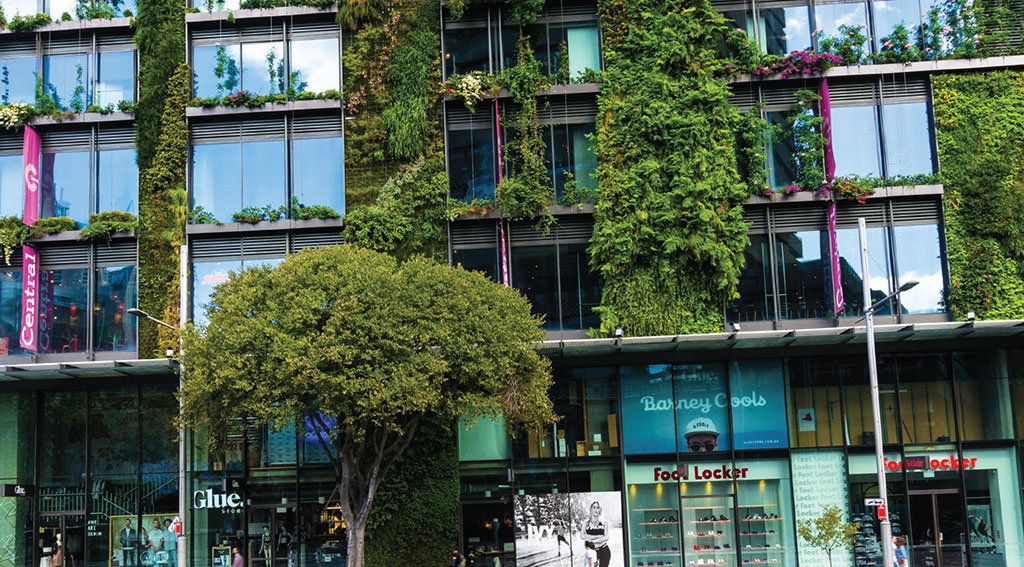
Experiential marketing, one of the many disciplines we use to garner awareness, interaction, engagement and essentially sales, has always been seen as the most ecologically damaging, writes Gavin Coffey.
One-off events and stunts were guilty of using materials and practices which generated more substance for landfills than they offset, which at times was deemed unavoidable, but “unavoidable” doesn’t cut it anymore. Those charged with marketing budgets, brands and events have a duty now to drive return on investment but not at the expense of the planet. Another derivative or factor in their calculation of ROI is the emergence of second definitive ‘I’, the ‘impact’ it has on our climate or ecosystem.
Yes, sustainability is the ‘hot topic’ right now but it’s far from a new phenomenon and the responsible agencies and brands among us have been reducing our carbon footprint for years. However, as time passed, the effects of the production of single-use plastics or burning of fossil fuels has become more apparent and more talked about in the mainstream thanks to the media coverage generated by Attenborough, Greenpeace and Thunberg amongst others. A welcome change in the collective mindset.
While this might seem detrimental to the experience economy, it’s actually a superb opportunity to stand up and be counted. There is no fence to sit on here. Research shows that 63% of global consumers prefer to purchase products and services from companies that stand for a purpose that reflects their own values and beliefs, and will avoid companies that don’t, according to Accenture Research. Whether you’re focussed on outcomes (sentiment, consideration, loyalty) or the outputs (interactions, sales), you can still achieve the same level of success without having to sacrifice on the overall experience, in fact brands who highlight their sustainability story in creating the experience can achieve a higher recall. It becomes part of your narrative as well as your production, showing you actually care sparks an emotional response thus heightening the positive sentiment and reaction.
Nike has been researching and developing sustainable practices for the whole apparel industry, open sourcing its findings so that even its competitors can learn from its findings. By that benefit, adidas created the ‘Parlay range’ of footwear, made from plastic gathered from the oceans. Both saw a significant rise in consumer sentiment and sales. This year, Glastonbury hosted a stage made entirely out of recycled materials which was collected on pre-event organised beach cleans. Brands literally walking the walk then using it as part of the marketing narrative, positively reducing their impact without conceding on the final ROI.
As with all cultural and process change, planning is key
The first port of call here for experiential marketing is of course to research the materials used. Branded merchandise will prove the most difficult, simply because many suppliers have yet to switch on to the impact their products have on the environment. Large Asian and American conglomerates still work on old-school capitalist ideals that don’t necessarily match with sustainable practices, money over matter.
We recently sat down with Dublin City Council to discuss the new policies around on-street sampling. In a hugely positive move all single-use plastics have been rightly outlawed, a move from PET to PLA materials. No more single-use ponchos, no more plastic bottles, no more disposable cutlery, no more logo emblazoned keychains or whatever you’re having yourself. The good better news is that there are countless other sustainable replacements, you just need to be creative and research your supplier capabilities. But really your product and experience should be good enough to not need a takeaway memento.
Also worth bearing in mind are the transport methods used to create your experiences. Everything from how your builds are delivered to how your teams arrive to the destination needs to be considered. While we always do our very best to ensure Irish supply chains are used, sometimes this is not entirely possible, so you’ll need to factor in a longer lead time. Teams are strongly advised to use buses, trains, bicycles or walk to their event location, but for harder to access destinations are requested to use shared transport with allowances made in their remuneration.
Lastly, you must stop short-sighted planning and look at longer-term outputs and outcomes from your experience or events. Can your build or experience be reskinned or reused further down the line in a revised or separate campaign? Plan to have evergreen props or structures that can be reinvigorated with a new ‘lick of paint’, setting or application. With this there may be an added cost for storage, but savings in the long term provided you reuse an adequate or effective amount of times.
Put simply, the production and execution of your experiences with a sustainability ethos doesn’t need to evoke any fear or stress. With smart planning, proactive research and striving for a carbon neutral output, you will achieve greater success outright. You can sleep easy knowing your ROInvestment and your ROImpact are treated with equal importance, and not adversely related.
Gavin Coffey is global digital director at Honey+Buzz, the creative brand experiences agency.




















